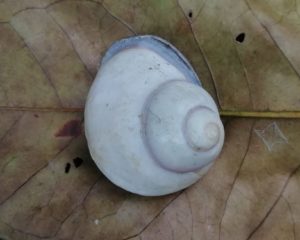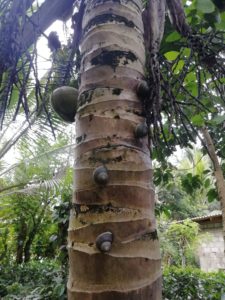Kingdom – Animalia
Phylum – Mollusca
Class – Gastropoda
Superfamily – Acavoidea
Family – Acavidae
Genus – Acavus (Montfort 1810)

The Acavidae are presented in Sri Lanka by two endemic genera, Acavus and Oligospira. Acavus is a genus of terrestrial, air-breathing land snails that endemic to Sri Lanka. They are Gondwana related tree snails that lived in Gondwanaland over 150 million years ago. Gondwana is a Southern Hemisphere supercontinent composed principally of South America, Africa, Arabia, Madagascar, India, Antarctica, and Australia. Their closest relatives live in Madagascar island. It is the best evidence to describe them as Gondwanaland related. The Family Acavidae (Genus Acavus) includes three species in Sri Lanka at present.
01. Acavus superbus
02. Acavus haemastoma
03. Acavus phoenix
The first Acavus species was described by Linnaeus in 1758, Acavus haemastoma. Then L. Pfeiffer described Acavus superbus in 1850 and Acavus phoenix in 1854. After a ton of publications there are three species, two subspecies and five colour varieties in the Acavus genus in Sri Lanka.
- Acavus superbus includes three separated colour varieties,
01. Acavus superbus superbus
02. Acavus superbus roseolabiatus
03. Acavus superbus gravillei - Acavus haemastoma includes two separated colour varieties,
01. Acavus haemastoma haemastoma
02. Acavus haemastoma melanotragus - Acavus phoenix includes two subspecies,
01. Acavus phoenix phoenix
02. Acavus phoenix custaneus

Acavus is essentially restricted to the wet zone of Sri Lanka up to more than 600m altitude. But only one Acavus species is also present at Ritigala (an isolated forest patch in the North-Central dry zone). Those snails are commonly found in algae-covered tree logs in evergreen, shaded forests but also in man-made structures such as algae-covered lamp towers and walls.


No one has studied about their food, But they should be fed on algae because they commonly live in algae-covered substrates. They aren’t pests, Because they don’t feed on leaves. Acavus phoenix is the biggest species of all. Their shell is hard and regenerable.
It means the shell will be repaired when damaged. The Acavus is an oviparous genus and lay one, greenish-white colored egg in leaf litter at once. They are hermaphrodites.

